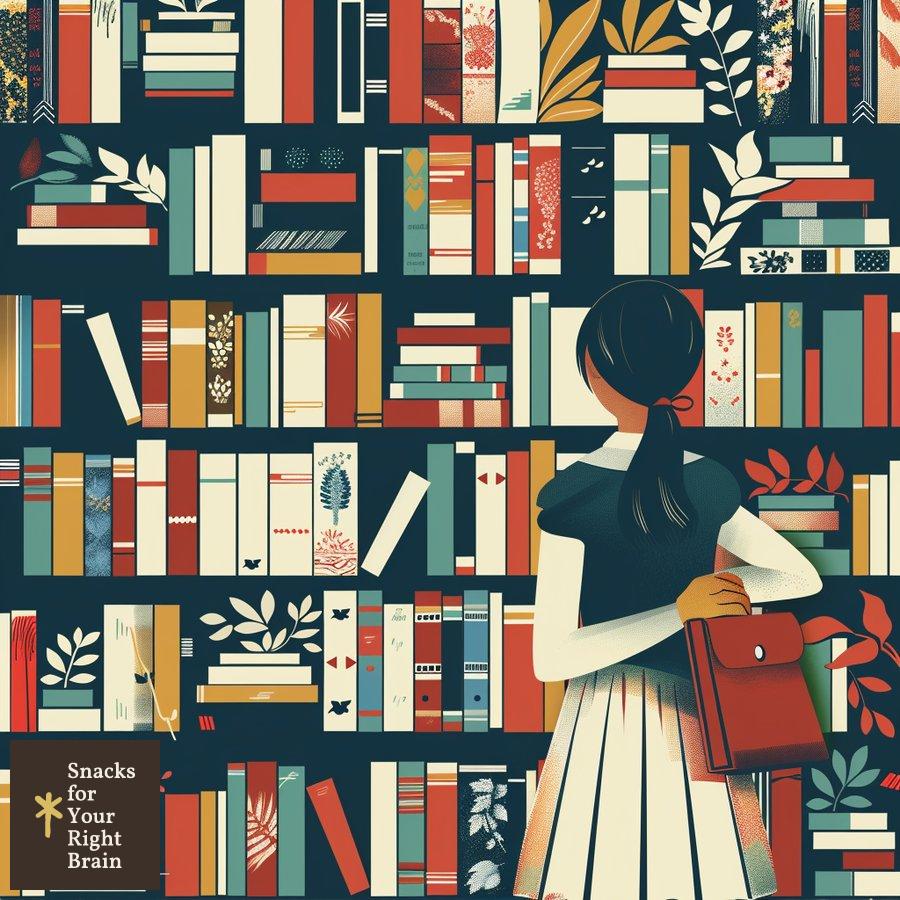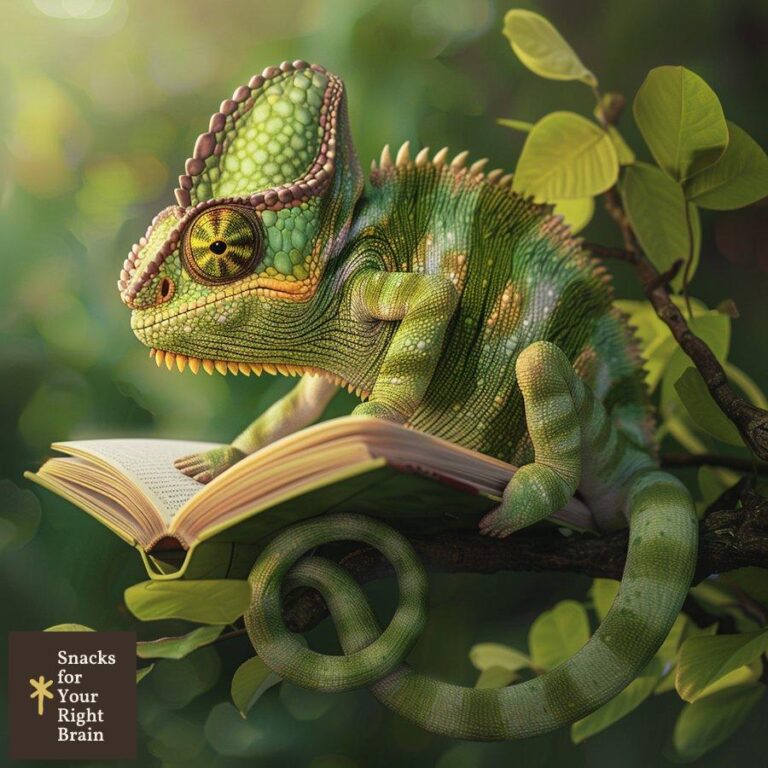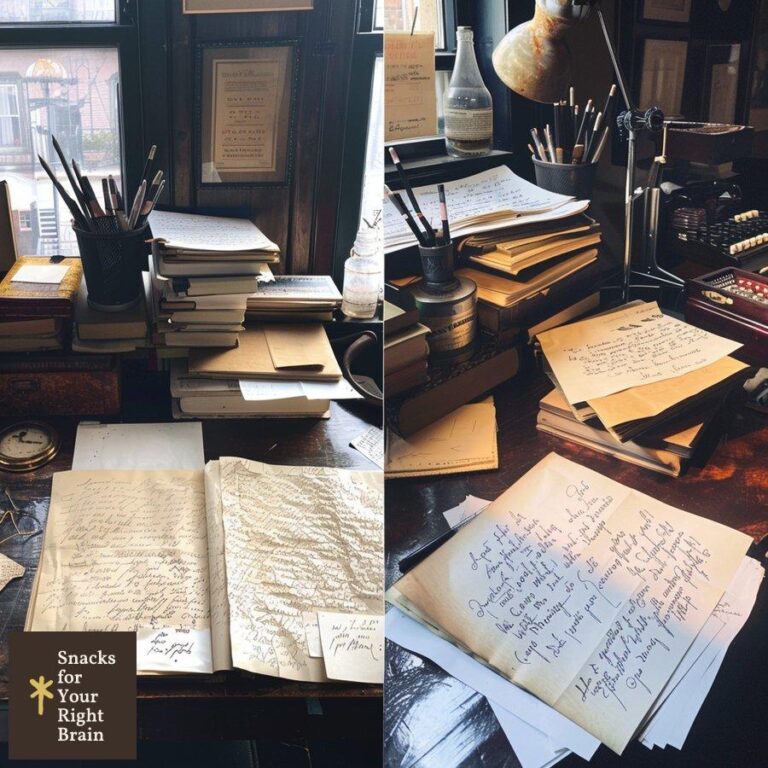How Long Should a Short Story Be for Submission
Short story writers often grapple with the question of ideal story length when preparing their work for submission. Understanding the typical word count ranges, submission guidelines, and factors that influence story length can help authors craft pieces that resonate with readers and meet publishers’ requirements. This comprehensive guide explores the nuances of short story length, offering insights and strategies for writers aiming to optimize their submissions.
What defines the typical word count range for short stories?
Short stories occupy a unique space in the literary world, bridging the gap between flash fiction and novellas. The typical word count range for short stories spans from 1,000 to 7,500 words, though this can vary depending on the publication or contest guidelines.

Flash Fiction: At the lower end of the spectrum, we find flash fiction. These ultra-short stories typically range from 300 to 1,000 words. Flash fiction challenges writers to convey a complete narrative arc within a highly constrained format, often focusing on a single scene or moment.
Traditional Short Stories: The most common range for short stories falls between 2,000 and 5,000 words. This length allows for more developed characters, plot complexity, and thematic exploration while still maintaining the concise nature of the form.
Longer Short Stories: Some publications accept stories up to 7,500 words or even 10,000 words. These longer pieces provide room for more intricate plots, multiple characters, and deeper exploration of themes.
It’s important to note that these ranges are not set in stone. Some literary magazines or anthologies may have specific requirements that fall outside these typical ranges. Writers should always consult the submission guidelines for their target publication to ensure their story meets the expected length.
The following table provides a quick reference for typical short story length categories:
| Category | Word Count Range |
|---|---|
| Flash Fiction | 300 – 1,000 words |
| Short-Short Stories | 1,000 – 2,500 words |
| Traditional Short Stories | 2,500 – 5,000 words |
| Long Short Stories | 5,000 – 7,500 words |
| Novelettes | 7,500 – 17,500 words |
Understanding these general categories can help writers gauge where their work fits in the short story spectrum and identify appropriate markets for submission.
How do submission guidelines vary across literary magazines?

Literary magazines, anthologies, and writing contests each have their own unique submission guidelines, including specific word count requirements. These guidelines can vary significantly from one publication to another, reflecting the editorial vision, target audience, and practical considerations of each outlet.
Print Magazines: Traditional print literary magazines often have stricter word count limits due to space constraints. For example, The New Yorker typically publishes stories between 2,000 and 6,000 words, while Granta accepts submissions up to 6,000 words.
Online Publications: Digital literary magazines may have more flexibility in terms of word count. Some online publications, like Narrative Magazine, accept stories up to 15,000 words, while others, like SmokeLong Quarterly, specialize in flash fiction under 1,000 words.
Genre-Specific Markets: Science fiction and fantasy magazines often have different word count expectations compared to literary fiction outlets. For instance, Clarkesworld accepts science fiction stories between 1,000 and 16,000 words, while Asimov’s Science Fiction prefers stories in the 2,000 to 7,500-word range.
Anthologies: Themed anthologies may have very specific word count requirements based on the project’s scope and the number of stories to be included. These can range from tight constraints (e.g., exactly 1,000 words) to broader ranges (e.g., 3,000 to 7,500 words).
Writing Contests: Short story competitions often have strict word limits to ensure fair judging and to accommodate prize structures. These limits can vary widely, from flash fiction contests capped at 500 words to more expansive competitions allowing up to 10,000 words.
To illustrate the diversity of submission guidelines, consider the following table comparing word count requirements for several well-known literary magazines:
| Literary Magazine | Minimum Word Count | Maximum Word Count |
|---|---|---|
| The New Yorker | 2,000 | 6,000 |
| Granta | Not specified | 6,000 |
| Ploughshares | Not specified | 6,000 |
| Tin House | Not specified | 10,000 |
| Glimmer Train | 2,000 | 12,000 |
| One Story | 3,000 | 8,000 |
| The Paris Review | Not specified | 7,500 |
These variations underscore the importance of carefully reading and adhering to each publication’s specific guidelines. Submitting a story that falls outside the required word count range can result in automatic rejection, regardless of the story’s quality.
Writers should also be aware that some publications have different word count requirements for solicited versus unsolicited submissions. Established authors or those with a prior relationship with the magazine may be granted more flexibility in terms of story length.
When preparing submissions, authors should consider creating multiple versions of their story to fit different word count requirements. This approach allows for targeting a wider range of markets without compromising the core narrative.
What factors influence the ideal length of a short story?
The ideal length of a short story is not solely determined by submission guidelines or arbitrary word count limits. Several factors contribute to the optimal length of a narrative, balancing the needs of the story itself with practical considerations of publication and readership.
Narrative Complexity: The complexity of the plot and the number of characters involved play a significant role in determining a story’s ideal length. A story with multiple plot threads or a large cast of characters may require more words to fully develop and resolve.
Thematic Depth: Stories exploring complex themes or philosophical ideas might necessitate a longer format to adequately unpack and examine the concepts at hand. Conversely, stories focusing on a single, powerful moment or emotion can often be effectively conveyed in a shorter form.
Pacing and Tension: The rhythm and flow of a story can influence its ideal length. Some narratives benefit from a slow build of tension, requiring more words to create the desired effect, while others thrive on brevity and immediacy.
Character Development: The depth of character exploration desired by the author impacts story length. Fully fleshing out a character’s background, motivations, and arc typically requires more words than a story focused on a single defining moment in a character’s life.
Setting and World-building: Stories set in unfamiliar or fantastical worlds may require additional words for world-building and context-setting. Historical fiction or science fiction pieces often need extra space to establish the unique aspects of their settings.
Stylistic Choices: An author’s writing style can significantly impact story length. Minimalist prose might convey a complex narrative in fewer words, while a more descriptive or lyrical style might extend the word count.
Reader Engagement: Consideration of the reader’s attention span and engagement level can influence a story’s ideal length. In the digital age, where shorter content often performs better online, some authors may opt for more concise storytelling.
Publication Medium: The intended publication medium can affect the ideal story length. Stories destined for online platforms might be shorter to accommodate screen reading, while those aimed at print anthologies might have more room to expand.
Genre Expectations: Different genres have varying expectations for story length. Literary fiction often allows for longer, more contemplative pieces, while genre fiction like mystery or horror might favor tighter, more plot-driven narratives.
Authorial Intent: Ultimately, the author’s vision for the story and what they aim to achieve with the narrative should guide the story’s length. Some stories simply require more or less space to be told effectively.
To illustrate how these factors might influence story length across different genres, consider the following table:
| Genre | Typical Length Range | Influencing Factors |
|---|---|---|
| Literary Fiction | 2,500 – 7,500 words | Thematic depth, character development, stylistic choices |
| Science Fiction | 3,000 – 10,000 words | World-building, concept exploration, plot complexity |
| Mystery/Thriller | 2,000 – 5,000 words | Pacing, plot twists, tension building |
| Flash Fiction | 300 – 1,000 words | Focused narrative, single moment or idea, brevity |
| Historical Fiction | 3,500 – 7,500 words | Setting details, historical context, character development |
Writers should consider these factors when determining the ideal length for their short stories. The goal is to find the sweet spot where the story is fully realized without unnecessary padding or forced truncation. This balance ensures that the narrative is as impactful and engaging as possible while still meeting the practical requirements of publication.
How can writers craft stories to fit specific word limits?
Crafting a short story to fit within specific word limits is a skill that combines creativity with precision. Writers must learn to tell their stories effectively while adhering to the constraints set by publishers or contests. Here are strategies and techniques to help authors tailor their narratives to meet specific word count requirements:

Start with a Clear Concept: Begin with a well-defined story idea. Having a clear concept from the outset helps in determining which elements are essential and which can be trimmed if necessary.
Outline Efficiently: Create a concise outline that includes only the key plot points and character moments. This framework will help maintain focus on the core narrative elements.
Focus on a Single Conflict or Theme: Limit the scope of the story to one central conflict or theme. This approach naturally constrains the narrative and prevents unnecessary subplots or digressions.
Limit the Cast of Characters: Keep the number of characters to a minimum. Each new character requires introduction and development, which consumes valuable word count.
Choose a Narrow Time Frame: Set the story within a limited time frame. This constraint can help maintain focus and prevent the narrative from expanding beyond the desired word count.
Use Implication and Subtext: Instead of explicitly stating every detail, use implication and subtext to convey information. This technique allows readers to infer background and context without using extra words.
Start In Medias Res: Begin the story in the middle of the action. This approach eliminates the need for lengthy exposition and immediately engages the reader.
Employ Precise Language: Choose words carefully, opting for specific, evocative language that conveys maximum meaning in minimal space. Avoid redundancy and unnecessary modifiers.
Utilize Dialogue Efficiently: Dialogue can be an efficient way to convey information and develop characters. However, ensure each line of dialogue serves a purpose and moves the story forward.
Edit Ruthlessly: After completing the first draft, edit aggressively. Cut any sentences, paragraphs, or scenes that don’t directly contribute to the core narrative or character development.
Use the “Iceberg Technique”: Popularized by Ernest Hemingway, this technique involves implying a larger story world beneath the surface of the visible narrative. This allows for rich storytelling without explicitly detailing every aspect of the story universe.
Revise for Length: If the story is too long, look for areas to condense. If it’s too short, identify opportunities to expand on key moments or add sensory details without bloating the narrative.
Read Aloud: Reading the story aloud can help identify areas of redundancy or unnecessary elaboration. It also helps in gauging the overall flow and pacing of the narrative.
Seek Feedback: Share the story with beta readers or writing groups. Fresh perspectives can help identify areas where the story can be tightened or expanded as needed.
Consider the Story’s Natural Length: Sometimes, a story has a natural length that doesn’t fit neatly into standard word count categories. In such cases, consider whether the story might be better suited to a different format (e.g., flash fiction or novella) or if it can be restructured to fit the desired length without losing its essence.
To illustrate how these techniques might be applied to stories of different lengths, consider the following table:
| Word Count Range | Focus Areas | Techniques to Emphasize |
|---|---|---|
| 500 – 1,000 | Single moment or idea | In medias res, implication, precise language |
| 1,000 – 2,500 | One main character, limited plot | Focused conflict, efficient dialogue, minimal setting |
| 2,500 – 5,000 | Developed character arc, clear plot | Balanced exposition and action, selective detail |
| 5,000 – 7,500 | Multiple characters, complex plot | Subplots, deeper character development, richer world-building |
By applying these techniques and considering the appropriate focus areas for the target word count, writers can craft stories that are both compelling and compliant with submission guidelines. The key is to find the balance between telling a complete, engaging story and meeting the specified length requirements.
What are the exceptions to standard short story lengths?

While most short stories fall within the typical word count ranges discussed earlier, there are notable exceptions that challenge these conventions. Understanding these exceptions can provide writers with a broader perspective on the possibilities within the short story form and may inspire innovative approaches to storytelling.
Micro Fiction: At the extreme short end of the spectrum, micro fiction pushes the boundaries of brevity. These ultra-short stories, often under 300 words, challenge writers to convey a complete narrative in just a few sentences. Some forms of micro fiction include:
- Six-Word Stories: Popularized by Ernest Hemingway’s famous “For sale: baby shoes, never worn,” these stories tell a complete tale in just six words.
- Drabbles: Exactly 100-word stories that have gained popularity in online writing communities.
- Twitterature: Stories constrained to the character limit of a single tweet (originally 140 characters, now 280).
Novelettes: Bridging the gap between short stories and novellas, novelettes typically range from 7,500 to 17,500 words. This format allows for more complex plots and character development than traditional short stories while maintaining a focused narrative.
Linked Short Stories: Some authors create collections of interconnected short stories that, when read together, form a larger narrative. Each story can stand alone but contributes to an overarching plot or theme. Examples include Jennifer Egan’s “A Visit from the Goon Squad” and Elizabeth Strout’s “Olive Kitteridge.”
Experimental Forms: Some writers push the boundaries of traditional story structure and length through experimental forms:
- Fragmented Narratives: Stories told through a series of vignettes or non-linear segments.
- Mixed Media Stories: Narratives that incorporate visual elements, such as photographs or illustrations, alongside text.
- Interactive Fiction: Digital stories that allow readers to make choices that affect the narrative, potentially resulting in variable lengths.
Genre-Specific Exceptions: Certain genres have developed their own conventions regarding story length:
- Epic Poetry: While not prose, epic poems like Homer’s “Odyssey” or Dante’s “Divine Comedy” tell extended narratives that far exceed typical short story lengths.
- Graphic Short Stories: Comic book or graphic novel formats can tell complex stories in fewer words due to the visual component.
Publication-Specific Formats: Some publications have created unique formats that defy standard categorization:
- The New Yorker’s “Shouts & Murmurs”: Humorous pieces that are typically shorter than the magazine’s standard short stories.
- McSweeney’s Internet Tendency: Known for publishing unconventional and often brief humorous pieces that don’t always follow traditional narrative structures.
Award-Specific Categories: Some literary awards have created categories that encourage experimentation with length:
- The Caine Prize for African Writing: Accepts stories between 3,000 and 10,000 words, allowing for a broader range than many traditional short story contests.
- The Sunday Times Audible Short Story Award: Accepts stories up to 6,000 words, pushing the upper limit of what many consider a traditional short story.
To illustrate the diversity of these exceptions, consider the following table:
| Exception Type | Word Count Range | Notable Examples or Venues |
|---|---|---|
| Micro Fiction | 1 – 300 words | Six-Word Memoirs, Nanoism |
| Novelettes | 7,500 – 17,500 words | Asimov’s Science Fiction, Clarkesworld |
| Linked Short Stories | Varies (typically 30,000+ total) | “Olive Kitteridge” by Elizabeth Strout |
| Experimental Forms | Varies | “House of Leaves” by Mark Z. Danielewski |
| Genre-Specific (e.g., Epic Poetry) | 10,000+ words | “Paradise Lost” by John Milton |
| Publication-Specific | Varies | The New Yorker’s “Shouts & Murmurs” |
These exceptions demonstrate the flexibility and evolving nature of the short story form. They offer writers opportunities to experiment with narrative structure, explore the boundaries of brevity, or delve into more expansive storytelling within the short fiction format.
Writers interested in these exceptional forms should research markets specifically receptive to such work. Many online literary magazines and experimental writing venues welcome submissions that push the boundaries of traditional short story conventions.
Understanding these exceptions can also help writers think creatively about their own work.






